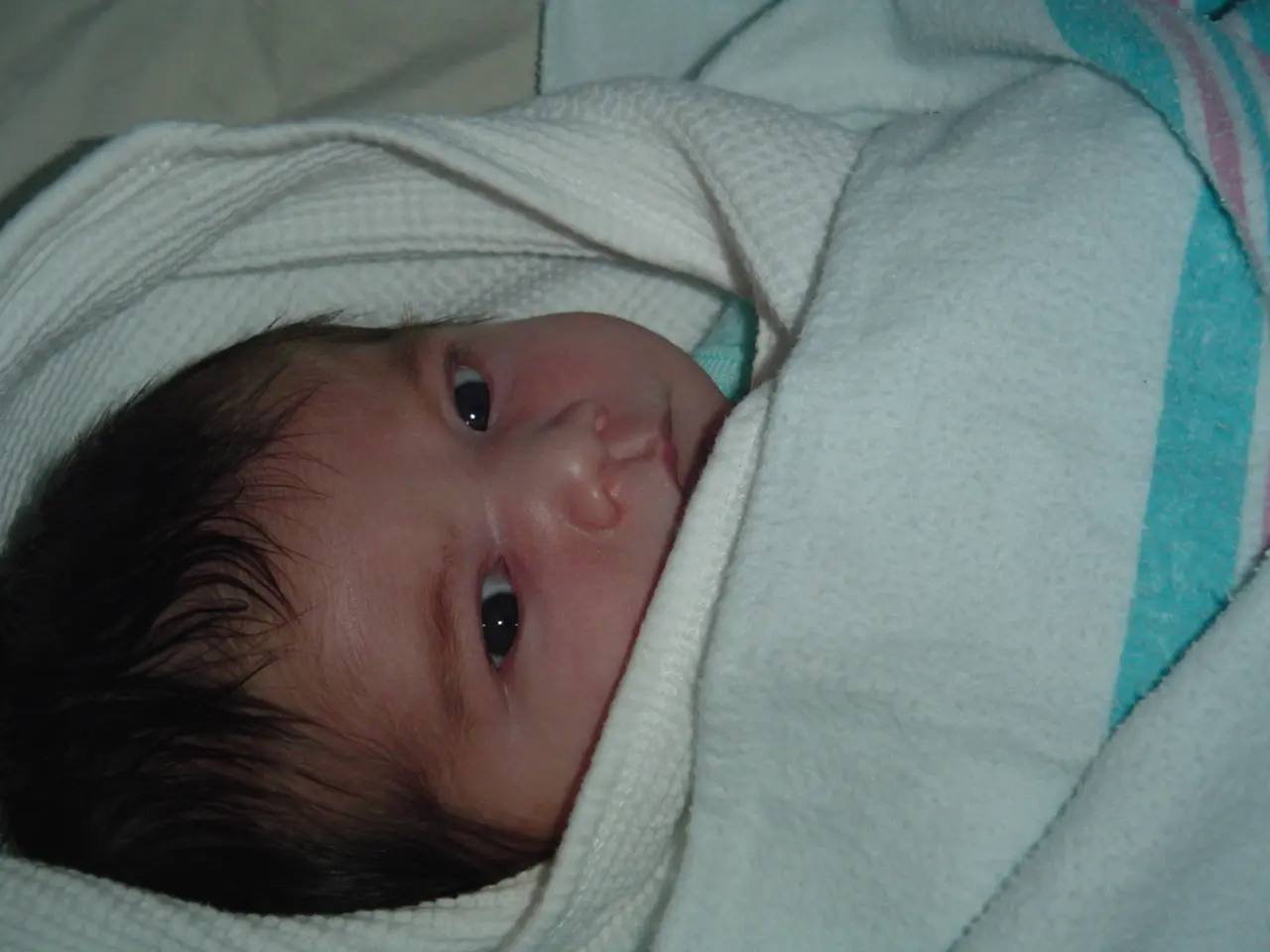Medical professionals in Sweden issue alarm to parents regarding hormone therapies following an instance where a newborn girl developed a 'miniature penis'
In recent years, there have been increasing concerns about children inadvertently being exposed to hormones through skin-to-skin contact with adults using topical hormone treatments. This issue, which can lead to significant physical changes and medical complications, has been reported in various parts of the world.
A notable case involved a 10-month-old girl in Sweden who developed an enlarged clitoris resembling a small penis after lying on her father's chest, who was using testosterone gel[1][3]. Another case involved a 10-year-old boy who began growing breasts after exposure to his mother's estrogen treatment[1][3]. These hormones, when absorbed by children, can cause lifelong damage, including disrupted development and long-term health risks[1].
The growing popularity of online prescriptions may be contributing to the rise in cases of hormone exposure in children. Hormone medications, which contain sex hormones that our bodies start to produce at puberty, should be handled with care[2]. To avoid accidental exposure, parents should take precautions such as avoiding direct skin-to-skin contact with children shortly after applying hormone medications[1][5]. It is important to follow pharmaceutical warnings, wash the application site thoroughly before contact, and keep children away from treated skin until the hormone is fully absorbed or washed off[5].
Parents can apply topical treatments to areas unlikely to come into contact with children, such as the inner thighs or upper back[4]. This precaution can help reduce the risk of accidental exposure.
The problem of children developing physical changes after exposure to hormone gels and sprays isn't isolated to Sweden. A Swedish trade magazine for medical professionals reported 41 global cases of suspected secondary exposure in children and adults involving oestrogen-containing medications between 2018 and 2025[6].
In 2024, a case series was published by paediatric endocrinologists in Wales documenting similar cases[1]. The researchers emphasised the mental health impact that unexpected hormone exposure can have on both children and their parents[1]. The mental health implications of such incidents are a crucial aspect of follow-up care, which varies depending on the severity and duration of exposure[7].
Dr Jovanna Dahlgren, a chief physician at Sahlgrenska University Hospital in Gothenburg, Sweden, recommends quarterly injections for patients taking testosterone, patches and vaginal tablets as alternatives to oestrogen sprays[8]. These measures can help reduce the risk of accidental exposure and its associated health risks.
It is essential for parents to discuss with their healthcare providers to understand the risks and safety measures associated with hormone medications. Awareness that these medications are potent and can transfer to others through skin contact is critical[1][5]. By taking necessary precautions, we can help protect our children from the potential harm associated with hormone exposure.
References:
- The Guardian
- Mayo Clinic
- BBC News
- NHS
- Endocrine Society
- Läkartidningen
- BMJ Case Reports
- The Local
- The mental health implications of children unintentionally being exposed to hormones, as seen in cases involving chronic diseases like early puberty, can be significant and require follow-up care to address the emotional impacts on both children and parents.
- In light of the rising concerns about childhood exposure to hormones through skin-to-skin contact, it is crucial to prioritize health-and-wellness education that includes understanding the risks and safety measures associated with various medical-conditions, such as hormone treatments for chronic-diseases, and implementing mental-health support for families affected by such incidents.




